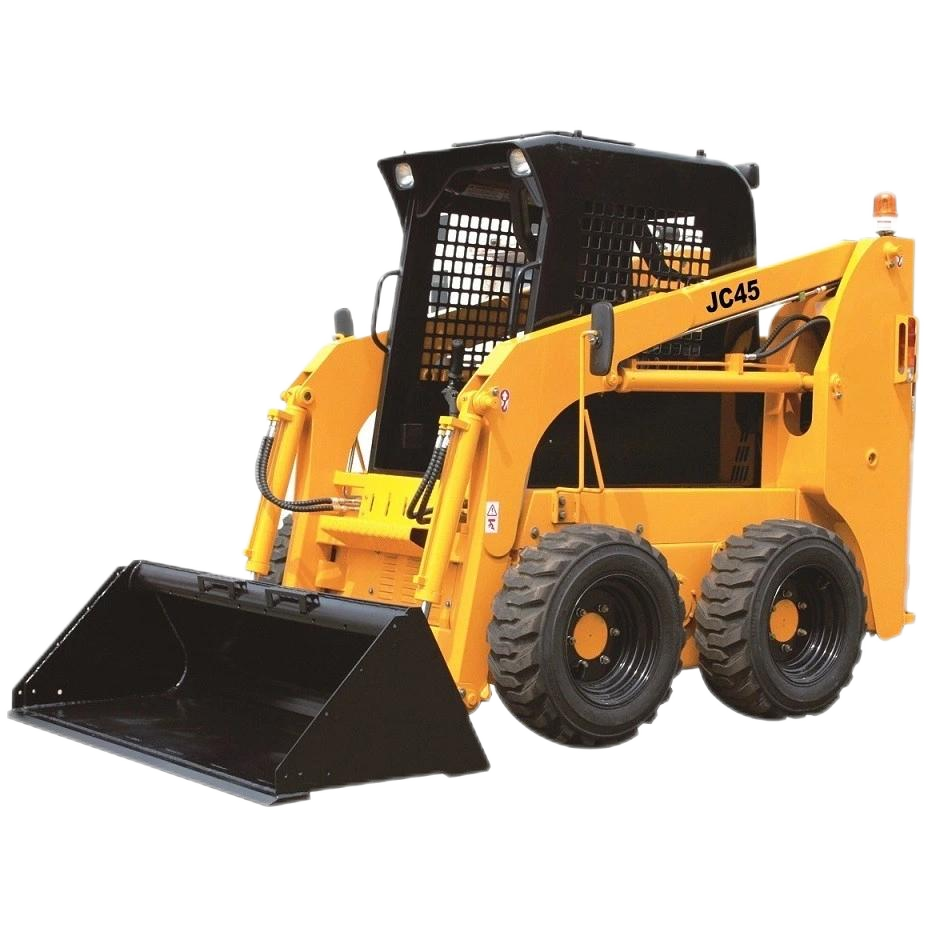Loaders are common construction machinery used in engineering construction. According to different classification standards, they can be divided into various categories. The following are common classification methods and specific categories:

Classification by driving method
- Wheel loader: It is one of the most widely used types of loaders, adopting a wheeled traveling mechanism. It has a relatively fast driving speed and good maneuverability, able to travel freely on various sites such as urban roads and construction sites, making it convenient to transfer between different operating points. Moreover, it is relatively easy to operate and suitable for loading, unloading, and handling operations on flat or slightly sloped sites, such as transporting sand and gravel at construction sites and short-distance transportation of ores in mines.
- Crawler loader: It uses crawlers as traveling components, with low ground pressure and strong grip, suitable for working on soft, muddy, and rough sites such as swamps and steep slopes in mines. However, its driving speed is slow, and its maneuverability is poor. It usually needs to rely on other means of transportation when transferring sites. Crawler loaders have large traction and strong excavation and loading capabilities, and are often used for heavy-duty operations.
Classification by purpose
- General-purpose loader: It has diverse functions and can be equipped with different working devices, such as buckets, forks, and bulldozer blades. It can complete various operations such as loading, unloading, handling, and bulldozing, and is applicable to various engineering scenarios such as construction, mining, and water conservancy. It is the most commonly used type of loader.
- Special-purpose loader: It is designed for specific operational needs. For example, the side-dump loader, whose bucket can unload to the side, is suitable for working in narrow roadways, tunnels, and other spaces, which can improve operational efficiency; there is also the skid-steer loader, which is small in size and highly flexible, and can perform various operations in small sites, such as small-scale handling and cleaning in municipal engineering.
Classification by traveling structure
- Rigid frame loader: The frame is a rigid structure without a suspension device. It has a simple structure, high strength, and strong load-bearing capacity, suitable for heavy-load operations. However, its riding comfort is poor, and it bump s obviously when working on uneven roads. It is mostly used in scenarios with high load-bearing requirements such as mines and large construction sites.
- Articulated loader: The frame is divided into front and rear parts, connected by an articulation device. It has a small turning radius and good maneuverability, able to work flexibly in narrow sites. Its riding comfort is relatively good, and it is widely used in various engineering construction sites.
Classification by power size
- Small loader: The power is generally below 75 horsepower. It is small in size, light in weight, and flexible in operation. It is suitable for use in scenarios such as small-scale engineering, agricultural operations, and municipal maintenance, such as transporting grain in rural areas and cleaning small construction sites.
- Medium-sized loader: The power is usually between 75 - 200 horsepower. It has good comprehensive performance and a wide range of applications. It can not only meet the loading and unloading needs of general construction sites but also perform medium-intensity operations in mines and other sites.
- Large loader: The power is above 200 horsepower. It has strong loading and handling capabilities, mainly used in large-scale operation scenarios such as large mines and large water conservancy projects, and can efficiently handle large quantities of materials.





